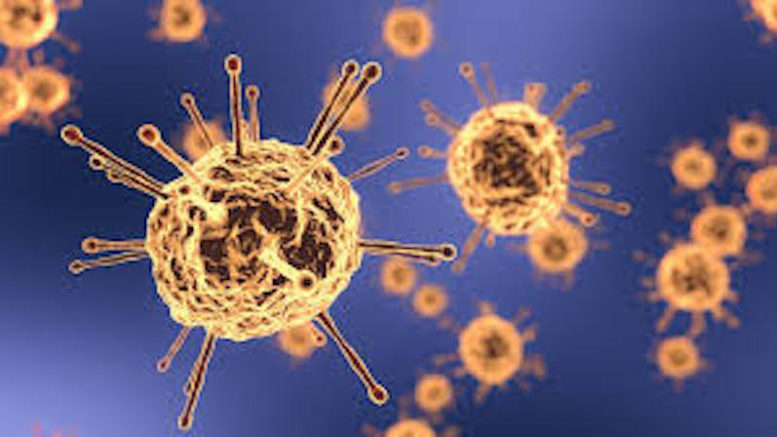Justin Kipness is a senior planning to study biology at Brown University in the fall. Each week, he has traced the coronavirus pandemic from its origin in Wuhan, China all the way to Stamford, CT. This marks the final installment of the nine-part series. See Part 1, Part 2, Part 3, Part 4, Part 5, Part 6, Part 7, and Part 8 to learn how we got here.
SARS-CoV-2, a Pandemic: Part 9, Treatments
The race to develop vaccines, antibodies and drugs to treat COVID-19 is one of the most important scientific efforts during the pandemic. The company, government agency or academic institution that develops an effective treatment will surely be critical to the safe reopening of society. While the potential for many of these treatments seems promising, it is important to recognize that no treatment is proven effective and safe until taken through extensive clinical trials.
Zhejiang University School of Medicine, Hangzhou, Zhejiang Province, China (30.3 N, 120.2 E)
The campus of Zhejiang University School of Medicine is situated in Hangzhou, China, known for its history and culture, according to zju.edu. A research team from this university wrote an important paper on the disease progression and possible treatments for COVID-19. Their paper, “The pathogenesis and treatment of the `Cytokine Storm’ in COVID-19,” was one of the main papers referenced in Part 7.
As discussed in Part 7, COVID-19 can cause severe symptoms due to a “cytokine storm,” which can lead to a dangerous increase in the inflammatory response, where immune cells can accidently target healthy cells. This has been linked to acute respiratory distress syndrome (ARDS) and organ failure.
Understanding the disease progression of COVID-19 is essential for public health. If a “cytokine storm” seems to be responsible for leading to negative outcomes in COVID-19 patients, one crucial question is being asked by researchers: how do we minimize this, and is there some sort of chemical that can block or inactivate the cytokine?
If you recall from Part 7, IL-6 was a cytokine involved in the inflammatory response. Higher levels of this cytokine were correlated with negative outcomes in patients. The most severe COVID-19 patients tended to have the highest concentration of IL-6, while the least severe cases had the lowest level. Is it possible that blocking or inactivating IL-6 in severe COVID-19 patients could lead to more positive outcomes?
One drug called Tocilizumab is an IL-6 “antagonist,” according to the NCBI. An antagonist in molecular biology is a drug, protein or other substance that suppresses the function of another molecule. For example, an IL-6 antagonist will suppress the function of IL-6, which could weaken an overactive inflammatory response, potentially reducing the effects of ARDS and organ failure in critically ill patients. According to the NCBI, “clinical studies from China have shown that Tocilizumab is effective in treating severely ill patients with extensive bilateral lung lesions, who have elevated IL-6 levels.” If Tocilizumab is effective, how does it antagonize IL-6? What does it do to shut down this pathway?
Think of the game Hungry Hungry Hippos, where players try to get their toy hippo to “eat” marbles. Let us say that the hippos represent cells and the marbles represent the IL-6 cytokine. Now let us say the goal is to block the marbles (cytokines) from entering the hippos (cells), assuming that the hippos’ mouths are fixed open. You find a material that fits into the hippos’ mouths so that the marbles are free to stay in the game board but do not actually enter the hippos’ mouths. This is essentially the same mechanism in which Tocilizumab works to antagonize IL-6. The drug does not directly inactivate the IL-6 cytokines but instead binds to the IL-6 receptor on cells, according to Johns Hopkins Medicine. If the IL-6 receptor is blocked, then IL-6 can not activate certain cells involved in the inflammatory response.
As discussed in Part 7, cytokines on their own do not kill. They act as the “rain” of the storm, establishing the conditions for a storm to begin. However, the direct harm done to the “terrain” (the body) is from the “lightning” and “winds” (the immune cells accidentally targeting lung cells). When you use an IL-6 antagonist it still “rains,” but there is no “wind” or “lightning” – at least in relation to the IL-6-mediated response – but you still may get adverse effects from other cytokines in the storm.
If you recall again from Part 7, another cytokine involved in the “cytokine storm” was called TNF-?. However, the paper published in the NCBI says that while the idea of using TNF blockers should be explored they have not yet been suggested in the treatment of COVID-19 patients. If a “cytokine storm” seems to cause bad outcomes in COVID-19 patients, why are scientists not trying everything to block cytokines?
First, not all of these drugs have gone through clinical trials, so there is no proof they are effective and safe. Second, it is logical to think that cytokine antagonists can do as much harm as help. While in severe cases of COVID-19, weakening the immune response can protect human cells from accidentally getting destroyed by immune cells, it can also weaken the immune response, making it more difficult for the body to fight against the actual virus. If the virus is not effectively eliminated by the immune system, unintended consequences could occur.
Other treatments have been proposed to overcome the deadly “cytokine storm.” Chloroquine, for example, “inhibits the production and release of TNF and IL-6, which indicates that chloroquine may suppress the cytokine storm in patients infected with COVID-19,” according to the NCBI. The use of corticosteroid therapies are also being looked at because these hormones have “anti-inflammatory functions,” according to the NCBI. Since these hormones suppress the immune response, early administration of corticosteroids increases viral load, which has negative impacts on patients. This is why it is usually only given to patients in critical condition to protect against ARDS and organ failure caused by a “cytokine storm.”
Cytokine is a general word that really refers to any chemical signal involved in the immune response. Not all cytokines contribute to strengthening an immune response; some are actually used to control and regulate it. IFN-λ, for example, has inhibitory functions on macrophages and neutrophils – immune cells involved in destroying pathogens – so it may be protective against ARDS and organ failure. IFN-λ also activates antiviral genes, so it exerts “antiviral effects without overstimulating the human immune system,” according to the NCBI. While this seems potentially promising, it is important to note that studies using IFN-λ to treat human coronaviruses have shown no reduction in mortality rates, according to the NCBI.
The “cytokine storm” scenario is so important for researchers to understand because it demonstrates how scientific discovery can influence important facets of society such as drug development. Without understanding the mechanisms of the “cytokine storm,” it would be much more difficult to propose any of these drugs.
NYU Langone Health, NYU School of Medicine, New York, New York, U.S.A. (40.7 N, -74.0 E)
NYU Langone Health, overlooking the East River in Kips Bay, Manhattan, is one of the hospitals located in the epicenter of the pandemic. A team of scientists from the hospital published a letter in Nature discussing the drugs hydroxychloroquine and azithromycin.
Researchers at NYU’s hospital performed a study to see if the popularized drugs hydroxychloroquine (HY) and azithromycin (AZ) cause adverse effects such as QT-interval prolongation, according to Nature. A QT-interval is an interval on an electrocardiogram (ECG), a machine used to observe a person’s heart rhythms. A prolonged QT-interval on an ECG reveals a potential for irregular heartbeats, which can cause severe damage to a person’s body and even cause death.
The heart is the organ that pumps oxygen-enriched blood throughout the body. Low blood pressure results when the heart is not functioning properly, which can lead to insufficient amounts of oxygen reaching the organs in the body (called hypoxia), which ultimately can lead to death.
It is vital that doctors and researchers observe how drugs affect organs like the heart. At NYU’s center, a cohort of 84 COVID-19 patients were given the treatment of hydroxychloroquine and azithromycin. In the study, they measured the QT-intervals of patients. According to Nature, “in patients with COVID-19 who were treated with HY/AZ, the QTc was significantly prolonged,” meaning that the drugs have the potential to cause heart problems.
The team of scientists concluded the paper by suggesting that patients who are potential recipients for this therapy should have ECG screenings first to see if they are at higher risks for complications. They also suggest that “the QTc should be followed repeatedly in patients with COVID-19 who are treated with HY/AZ…” Essentially, it is important to look at the ECG of patients taking these drugs to monitor the potential for complications.
According to Nature, “the effectiveness of [HY/AZ] in treating SARS-CoV-2 infection has been demonstrated in one small human study so far.” It is essential for clinical trials to take place to ensure that drugs not only do not cause harm, but effectively work as well.
The Mount Sinai Hospital, New York, New York, U.S.A. (40.8 N, -74.0 E)
Before the pandemic, runners and bikers sped up the paved paths through the greenery. Tourists meandered through the trails, walked around the reservoir and visited the Central Park Zoo.
Bordering the east side of the once-bustling Central Park is another New York City hospital – the Mount Sinai Hospital. Here, an innovative study is taking place investigating a possible treatment for the coronavirus – one that involves stem cells.
According to the Mayo Clinic, stem cells are the “body’s master cells.” That is, stem cells have the potential to differentiate into other cell types, like blood, liver or lung cells. Scientists have been particularly interested in the regenerative medicine possibilities offered by stem cells, specifically related to tissue and organ repair.
Mount Sinai hospital is the first hospital in the United States using stem cell therapy to try and treat COVID-19 patients. Although COVID-19 is a new disease, stem cell therapy has existed for some time now. One previous use of stem cell therapy was to treat the “often-fatal inflammatory condition called graft-versus-host disease (GVHD) that can occur after bone marrow transplants,” according to Mount Sinai. GVHD involves a cytokine storm that targets healthy cells. The stem cell therapy has shown promising results in treating this disease by weakening the effects of the cytokine storm.
Since severe cases of COVID-19 are also caused by a cytokine storm, as discussed in Part 7, stem cell therapy may be promising. According to Mount Sinai, their organization “will serve as the clinical and data coordinating center for a randomized clinical trial evaluating the therapeutic benefit and safety of this stem cell therapy in 240 patients with COVID-related ARDS in the United States and Canada.”
Stem cells are being investigated as a treatment for COVID-19 because of their anti-inflammatory properties. The specific type of stem cells used in this study are mesenchymal stem cells, which are found in the bone marrow. According to Dr. Levine, the co-director of the Mount Sinai Acute GVHD International Consortium, “Mesenchymal stem cells have a natural property that dampens excessive immune responses.” Therefore, stem cells may be able to help fight against the overactive immune response in critically ill COVID-19 patients. Like the drugs proposed by the team at Zhejiang University School of Medicine, stem cell therapy also aims to tackle the “cytokine storm.”
Only time and research will tell which therapies are successful in their clinical trials and which are not. Hopefully, a vaccine or drug will emerge that proves to be successful in protecting against SARS-CoV-2.
Stamford, Connecticut, U.S.A. (41.1 N, -73.5 E)
The life everyone had lived pre-pandemic will be a relic of the past. Just as the September 11 terrorist attacks changed the course of America, so will the pandemic and the social movements currently going on in the world. These events will be written about in history books, possibly ones underneath desks at Westhill High School.
To overcome the challenges posed by the pandemic, testing and contact tracing measures will likely be implemented across the world. Many questions remain unanswered for students at Westhill: will Westhill High School open next year? If it does open, what will the school year look like? What is going to happen to seniors graduating and going to college, the workforce, the military, among other things? A lot remains unknown. Hopefully an effective vaccine will go through clinical trials successfully and the pandemic will come to a halt, but no one can say when exactly that will be.
The lives of Westhill students as well as those around the world changed due to RNA enclosed in a lipid envelope covered with spike proteins. An entity smaller than a cell immensely transformed the entire human civilization. But this is not new – the bubonic plague (caused by the bacterium Yersinia pestis), the spanish flu (caused by the H1N1 virus), and HIV are all miniature entities that sculpted humanity. This leads to another question of great concern: When will the next pandemic occur?
Planet Earth (The Future)
Scientists have been predicting the next pandemic for years. The negative impact people pose to the environment also poses a great threat to humanity – one in the form of infectious diseases. Deforestation and other exploitative environmental activities puts workers in close contact with a diversity of wildlife. As discussed in Part 7, aggressive symbiosis may be at play. When habitats are destroyed and species are threatened and even going extinct, viruses may be driven to hop species barriers so that they can survive.
Global warming also disturbs the very fabric of earth’s ecosystems. One clear consequence of this is the increase in arthropod transmitted infections. As the earth warms, the geographic range of certain types of mosquitoes will increase, which will carry infectious diseases that are new to certain populations.
As seen with SARS-CoV-2, the extensive wildlife trade also creates new opportunities for infectious diseases to cross species barriers and seed a pandemic. Ecosystems or so complex, and many actions can have unintended consequences.
Viruses and other microbes have inhabited the planet before humans emerged. Even though some can cause disease, without microscopic creatures we would not be alive. As discussed in Part 7, viruses and microbes play an essential part in ecological systems as well as human health. Scientists need to research more about viruses and their ecology to better predict and stop the emergence of new diseases, and what is just as vital is the willingness of society to listen and make serious behavioral changes.
No one knows where and when the next lethal virus will emerge, but it may once again cause panic to stir among students walking through the halls of Westhill High School. The halls could once again become empty as Westhill joins schools across the globe to shut down. The vulnerabilities of our globalized world have been unmasked before – what will happen next?





